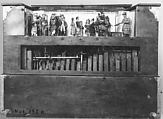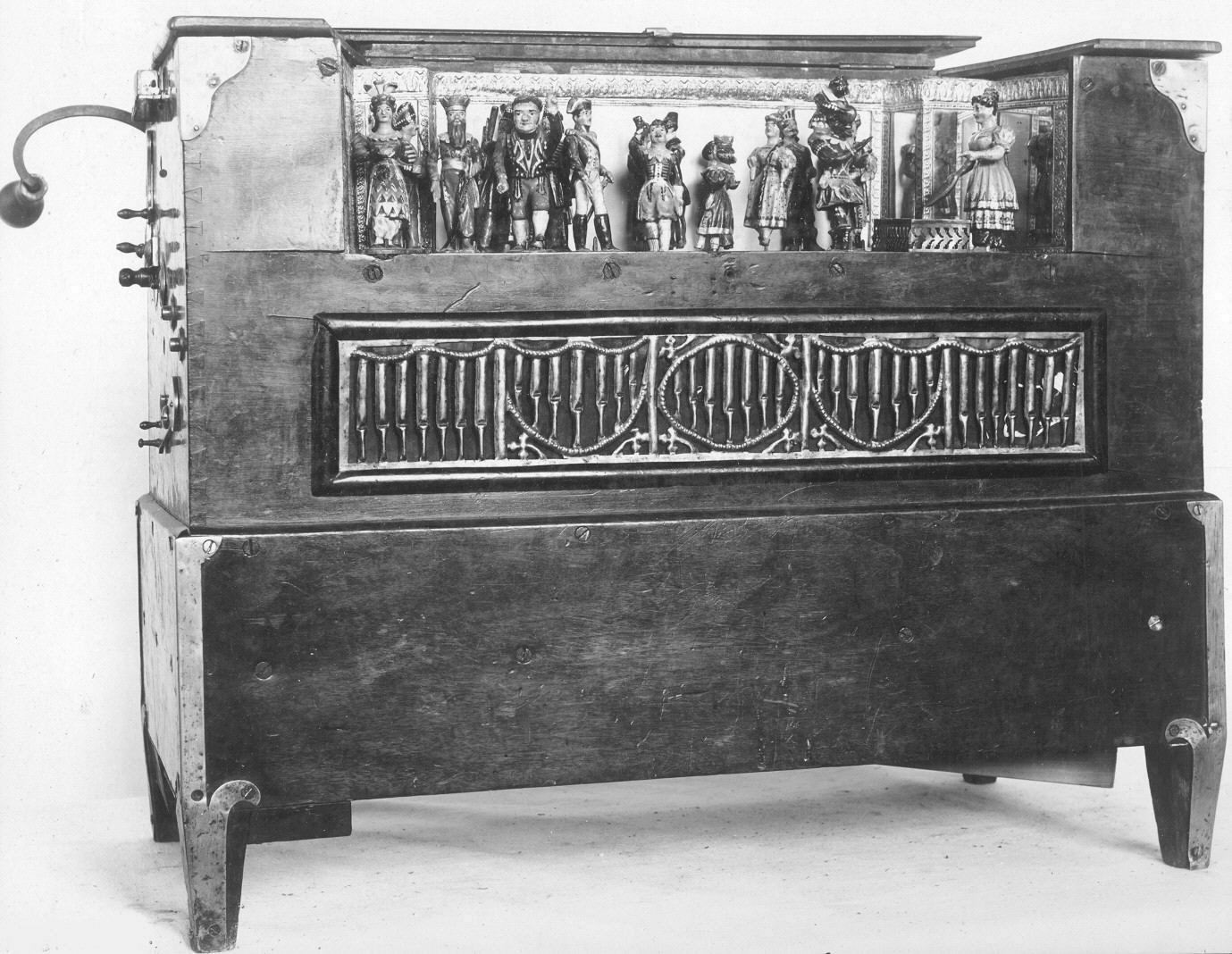Barrel Organ
Ignaz Bruder German
Not on view
Instead of having a keyboard played by an organist, a barrel organ is a mechanical instrument that has the musical notes encoded in an arrangement of metal pins in a wooden barrel or cylinder. This instrument is activated by a person turning a hand crank, which both powers the bellows that provides air, and also rotates the cylinder that engages the mechanism that sends the air through specific pipes.
According to Arthur W. J. G. Ord-Hume, Clockwork Music (Crown Publishers, N. Y., 1973), Ignaz Bruder began a family tradition of barrel organ building in 1829 and his family made the most important contributions to this intsrument.
Technical description: Rectangular walnut case with panel of display pipes on front, and above this, enclosed by a four-piece hinged lid, a mirror-lined stage (with embossed gold paper borders) supporting 18 moving figurines of dancers, musicians, and soldiers; brackets on sides held carrying strap (missing); four handstops on right side control four ranks of open and stopped wood pipes mounted within and horizontally below the case; a pinned and stapled barrel operates stickers that open valves in the windchest; a crank extending from the case back turns a combination worm and crank shaft that rotates the barrel and pumps a single fold feeder below a reservoir covered in decorative paper (two layers); a gear connected to the barrel engages a train of gears, shafts and springs that activate the figurines; a ten-notch shift pin projecting from the barrel is engaged by a drop latch on the left side, permitting tune selection; two reed pipes (?) (missing) mounted on a box on case bottom were operated by a stop lever; pitches indicated on sticker pin rail: T (trumpet?), C, D, E, F, F#, G, A, H, C, D, E, F, F#, G, A, H, C, D, E, H, G, C.
Due to rights restrictions, this image cannot be enlarged, viewed at full screen, or downloaded.
This artwork is meant to be viewed from right to left. Scroll left to view more.



